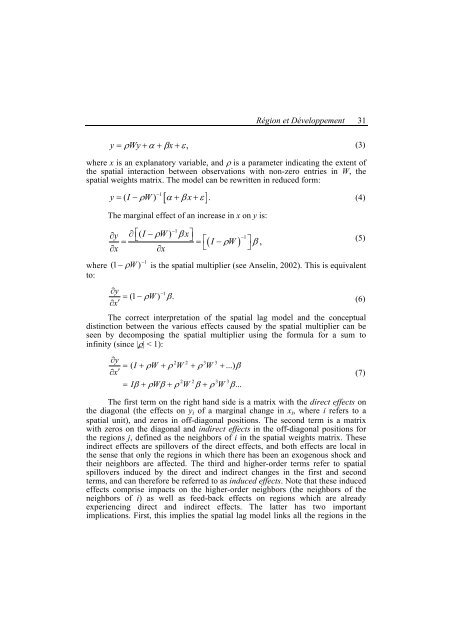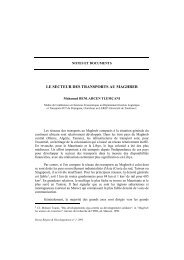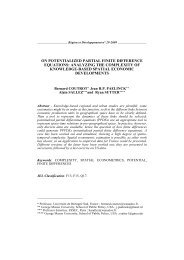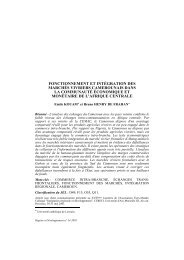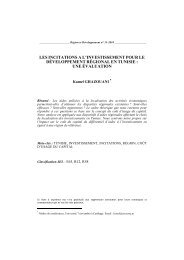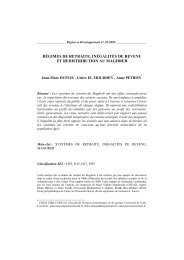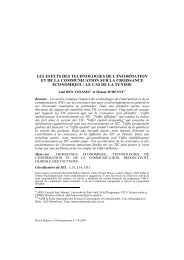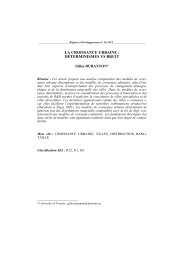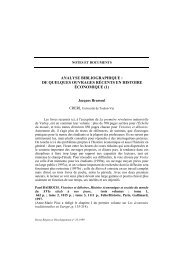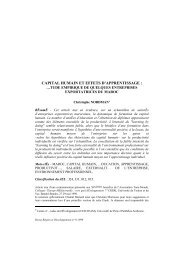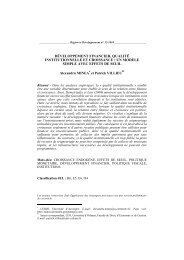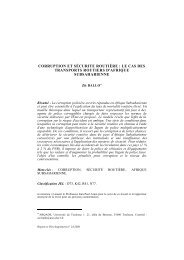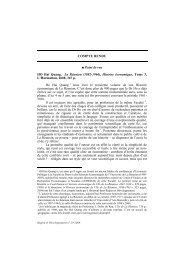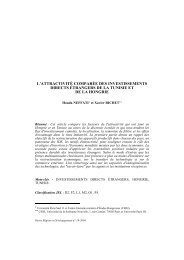space and growth: a survey of empirical evidence ... - ResearchGate
space and growth: a survey of empirical evidence ... - ResearchGate
space and growth: a survey of empirical evidence ... - ResearchGate
You also want an ePaper? Increase the reach of your titles
YUMPU automatically turns print PDFs into web optimized ePapers that Google loves.
Région et Développement 31y = ρ Wy + α + βx+ ε ,(3)where x is an explanatory variable, <strong>and</strong> ρ is a parameter indicating the extent <strong>of</strong>the spatial interaction between observations with non-zero entries in W, thespatial weights matrix. The model can be rewritten in reduced form:where (1 −to:−y = ( I − ρW) α + βx+ ε .(4)1[ ]The marginal effect <strong>of</strong> an increase in x on y is:⎡⎤= = −∂x∂x⎣−1∂y∂⎣( I −ρW)βx⎦ −1⎡ ⎤( I ρW)β ,⎦−1ρ W ) is the spatial multiplier (see Anselin, 2002). This is equivalent∂y= (1 − ρW)∂x′− 1β.The correct interpretation <strong>of</strong> the spatial lag model <strong>and</strong> the conceptualdistinction between the various effects caused by the spatial multiplier can beseen by decomposing the spatial multiplier using the formula for a sum toinfinity (since |ρ| < 1):∂y2 2 3 3= ( I + ρW+ ρ W + ρ W + ...) β∂x′2 2 3 3= Iβ+ ρWβ+ ρ W β + ρ W β...The first term on the right h<strong>and</strong> side is a matrix with the direct effects onthe diagonal (the effects on y i <strong>of</strong> a marginal change in x i , where i refers to aspatial unit), <strong>and</strong> zeros in <strong>of</strong>f-diagonal positions. The second term is a matrixwith zeros on the diagonal <strong>and</strong> indirect effects in the <strong>of</strong>f-diagonal positions forthe regions j, defined as the neighbors <strong>of</strong> i in the spatial weights matrix. Theseindirect effects are spillovers <strong>of</strong> the direct effects, <strong>and</strong> both effects are local inthe sense that only the regions in which there has been an exogenous shock <strong>and</strong>their neighbors are affected. The third <strong>and</strong> higher-order terms refer to spatialspillovers induced by the direct <strong>and</strong> indirect changes in the first <strong>and</strong> secondterms, <strong>and</strong> can therefore be referred to as induced effects. Note that these inducedeffects comprise impacts on the higher-order neighbors (the neighbors <strong>of</strong> theneighbors <strong>of</strong> i) as well as feed-back effects on regions which are alreadyexperiencing direct <strong>and</strong> indirect effects. The latter has two importantimplications. First, this implies the spatial lag model links all the regions in the(5)(6)(7)


